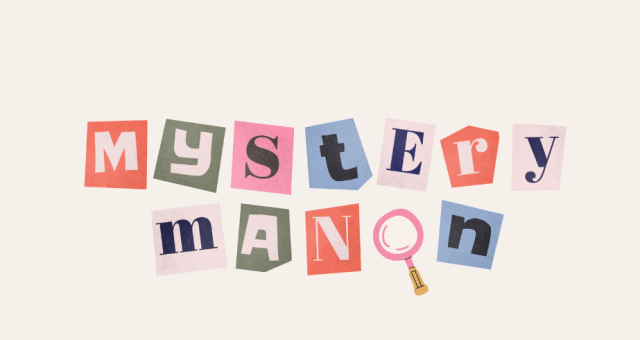Today’s featured author is Rob Osler, whose latest release, Cirque du Slay is—surprise!—a circus-themed mystery starring an unlikely group of friends. In the interview to follow, Rob and I talk about his LGBTQ+ ensemble cast, writing humor, his Edgar-award nominated short story, “Miss Direction,” and more.
Connect with Rob on Facebook, X, and his website. Grab a copy of Cirque du Slay from your retailer of choice here.
Hi Rob, it’s great to have you! Cirque du Slay is the second installment in your Hayden & Friends Mysteries series, which features four LGBTQ+ amateur sleuths. In this book, the four unlikely heroes solve a circus-themed murder mystery to clear their frenemy’s name. What do you love about these sleuths? What are the joys and challenges of having multiple sleuths solve a murder mystery?

Although the series’ top billing goes to pint-sized, twenty-five-year-old Hayden McCall, it is very much an ensemble cast. The “Cast Approach” allows for each character to bring their talents forward to solve the mystery. None of them alone could solve the crime. Hollister, Hayden’s bestie, a butch lesbian, is confident and bold and drives the action. Without Hollister, Hayden would be perfectly happy sitting on the sidelines. Burley, whose sexual identity is never clearly defined, delivers the over-the-top comedic humor. Jess, who is introduced in book two, Cirque du Slay, is a trans man and lawyer. Jess is calm in the storm. There is also a straight member of the oddball crime-fighting troop: ninety-one-year-old Jerry. His role in the romp is to serve as the brains of the operation and give Hayden some mature advice and quieter moments to unravel the crime.
Any series requires a recurring cast of characters for whom readers—hopefully!—create attachments. This also gives me more characters to create future plot lines around.
I love the fun and quirky themes of this series. How do you balance humor and mystery into your works? And/or, why do you think it’s important to include fun and eccentric themes in a murder mystery?
Ha! Thanks. I think it’s a stylistic choice for each author. For me, I wrote the series with a humorous bent and with offbeat characters because I enjoy that type of book (along with other flavors of mysteries and thrillers).
I was very intentional that the series’ queer characters be neither victims nor villains. From Will & Grace to Schitt’s Creek, I love comedic characters who are dialed in and over the top without becoming baffoons. I tried to push them—especially Burley—as far as I could without her becoming ridiculous. I think of Hayden & Friends as humorous fiction as much as mysteries.

Congratulations on your recent nomination for Mystery Writers of America 2024 Edgar Allan Poe Award! Your short story, “Miss Direction,” is up for Best Short Story. What inspired this story? What do you love about short-form mysteries versus full-length novels? (Note: “Miss Direction” is kindly available to read for free via Ellery Queen Mystery Magazine.)
Decades ago, American writer John Kennedy Toole wrote A Confederacy of Dunces. The novel went on to become a cult classic and mainstream success and earned Toole a posthumous Pulitzer Prize for Fiction. The story’s main character was like no other I’d read—he was, in a word, bananas. I’ve always wanted to write a character in that vein who was at once quirky (and then some) but also strangely likable. I hope I succeeded in doing that with Miss Direction’s main sleuth, Perry Winkle.
Short stories are a distinct challenge in that, presuming they’re a whodunit as mine are, you have to present the crime and suspects and solve it all within about five thousand words. I enjoy the challenge of compressing all the essentials of a traditional mystery within that constraint. And you might guess, it’s less work than a novel! You reach “THE END” much sooner, which can be satisfying.
Your upcoming series, Harriet Morrow Investigates, set in 19th-century Chicago, introduces an intrepid new detective. Can you share a little bit about this upcoming release, slated for release early next year?
I actually got an update from Kensington, the series’s publisher, that the pub date for book one in the Harriet Morrow Investigates series, The Case of the Missing Maid, is Christmas Eve 2024! The series is set in 1898 Chicago. Harriet Morrow is hired on a trial basis as the first female operative at the Prescott Detective Agency. Wearing men’s shoes and a bowler hat and conducting her investigation by bicycle, Harriet is in many ways an unconventional young woman—not the least of which is being attracted to women. Determined to prove herself and carve a path for women who might follow, Harriet sets out to solve her first case: a maid has disappeared from a south-side mansion!
Lastly, what else is on the horizon for you? Can you share any projects you’re currently working on, updates on future books, and/or what you’re looking forward to next?
I’m working on book two in the Harriet Morrow Investigates series, tentatively titled The Case of the Murdered Muckraker. I have also just received word that my second short story featuring loveable but bonkers sleuth Perry Winkle, titled “Not the Usual Boy,” will appear in an upcoming edition of—again—Ellery Queen Mystery Magazine.
Thanks so much to Rob for the interview. Sleuths, I hope you enjoyed it! If you aren’t already subscribed, please be sure to sign up for the Cluesletter and get author features like this alongside other mystery goodies, delivered to your inbox every other Tuesday.


















